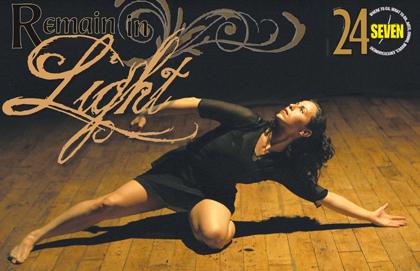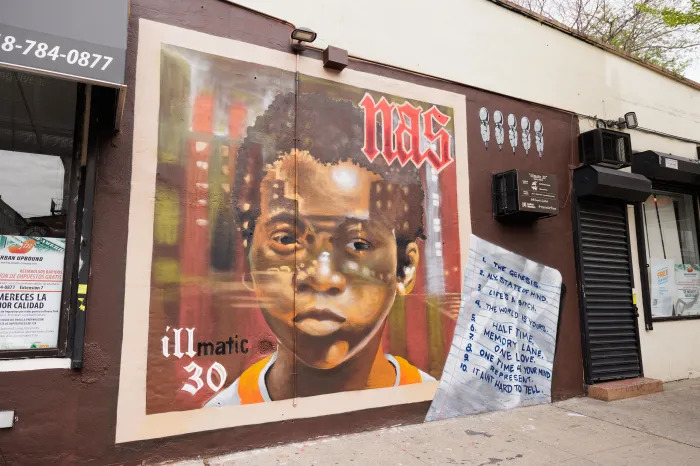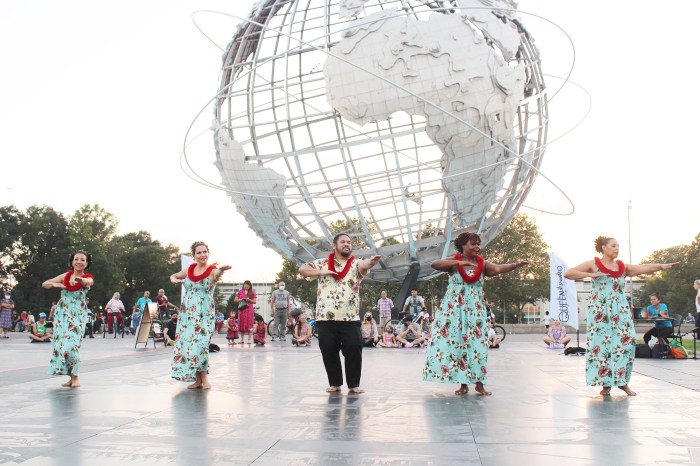By April Isaacs
Dina Denis' dance company, Dance Into Light, has been performing since 2003, and their most recent show was held June 13-14 at the Green Space Studios in Long Island City. The show featured the Middle Village-based group's new and repertory works, as well as a piece by Denis' students at Nadia's Performing Arts Center in Whitestone and live original music by Rob Ash, Steve Scalfani and Ken White.
Denis' solo, “Searching through the Mourning Rubble,” was perhaps the superior piece in the show, a dazzling and perfect example of Denis' characteristic linking of spastic and delicate movements.
Denis depicts the grieving process with her back to the audience, huddled on the floor as if desperately supplicating to a deity or searching through the emotional rubble for peace and closure, as the title suggests. Wild grief is a powerful state that can't be depicted successfully by the timid or frivolous and Denis' willingness to tackle it effectively with so much bare emotion is testament to her seriousness and boldness as an artist.
Another piece from Denis' repertoire, “Horizons,” was especially mesmerizing, an Indian classical-style dance performed by Lisa Craig, Andrea Eisenstein Winard, Denis and Nicole Sclafani to “Meetings along the Edge” by Philip Glass and Ravi Shankar. Elements of classical Indian dance, such as the upward swinging hand-gestures, or mudras, infuse some of Denis' other pieces performed in the show.
In the last segment, called “Trickle Up, Down and Through my Spine,” Denis and Sclafani are entangled in black cord. Wrapped around their waists and necks, the cords looks fatally tight. The two are dressed in post-apocalyptic, tattered-looking costumes, and the image of sexual bondage here is plain to see, but it's hard to say if it was an intentional component since there isn't any message to be drawn from it in the context of the bigger storyline: the System's unshakable control over The Mind, The Body and Society.
The dance begins with an ever-shifting power dynamic between the two protagonists: The Body (Sclafani) and The Mind (Denis). The two struggle violently in a tug-of-war with the cord, attempting to strangle one another and periodically fleeing across the room in lyrical, diagonal leaps. They take turns falling and writhing on the floor and bound back into each other's arms. The Body, like a scared child woken up from a nightmare, wraps its legs around The Mind's waist.
Enter Society (Craig), who taunts them and at times successfully pits the two against each other. Who else is left to enter the fight but The System (Winard), and we all know who wins this one. For the final pose, Mind, Body and Society are defeatedly stacked on top of one another in child-pose, The System standing on their backs, elegantly elongated, albeit a little wobbly (and probably not part of intended choreography). It's a facile message, sure, but despite its hokey simplicity, the piece is still moving. As in Denis' other pieces, aptly chosen music and soft poetic movements that suddenly dart into agitated maneuvers combine well to evoke a sensually shocked response from the audience, regardless of the intellectual expression of the piece.



































